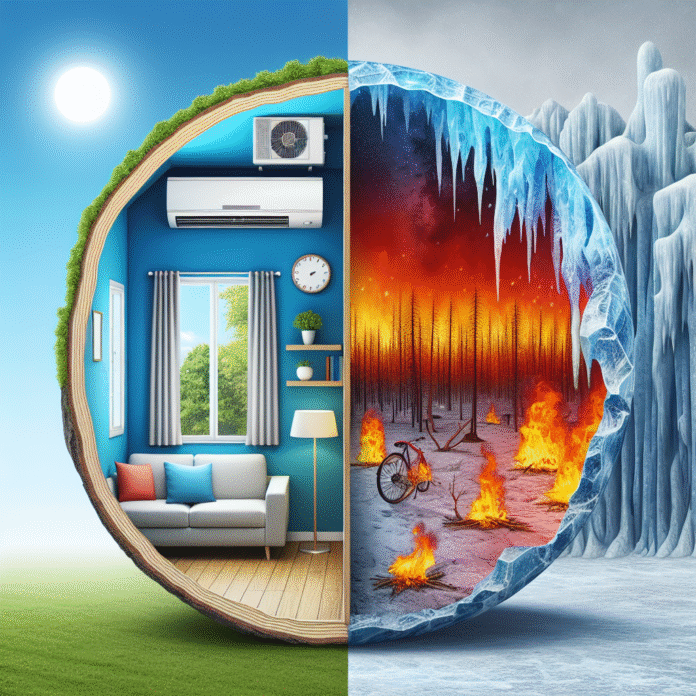The Air Conditioning Challenge for Sustainable Living
The Air Conditioning Dilemma: Cooling Homes Heats the Planet
As temperatures rise globally, the demand for air conditioning in homes has surged, presenting a paradox: while AC systems provide relief from extreme heat, they also contribute significantly to climate change. The reliance on these cooling systems is escalating, particularly in regions that are experiencing hotter summers and prolonged heatwaves.
The Environmental Impact of Air Conditioning
Air conditioning units primarily operate using electricity, much of which is generated from fossil fuels. This results in increased greenhouse gas emissions, further exacerbating global warming. According to recent studies, air conditioning systems account for nearly 20% of the total electricity consumption in many countries, with this figure expected to rise as more households acquire AC units.
Moreover, many air conditioning systems use hydrofluorocarbons (HFCs), potent greenhouse gases that can trap heat in the atmosphere thousands of times more effectively than carbon dioxide. Although international agreements, like the Kigali Amendment to the Montreal Protocol, aim to phase out HFCs, their continued use poses a significant environmental threat.
Mitigating the Cooling Crisis
To address the cooling dilemma, several strategies can be employed:
1. **Energy Efficiency Improvements**: Upgrading to more energy-efficient air conditioning units can significantly reduce electricity consumption and emissions. Models that utilize variable-speed compressors and smart technology can optimize energy use based on real-time conditions.
2. **Alternative Cooling Solutions**: Exploring natural ventilation, evaporative cooling, and passive solar design can lessen reliance on traditional air conditioning. These methods often involve architectural changes that improve airflow and reduce heat absorption in homes.
3. **Renewable Energy Sources**: Transitioning electricity generation toward renewable sources, such as solar or wind, can help mitigate the environmental impact of air conditioning. Homeowners can also consider installing solar panels to power their cooling systems sustainably.
4. **Urban Planning Initiatives**: Cities can implement green spaces, reflective roofs, and urban forests to reduce the urban heat island effect, which contributes to higher temperatures and increased air conditioning use. Investments in public transportation and sustainable infrastructure can also lessen overall energy demands.
Consumer Awareness and Behavioral Changes
Consumer behavior plays a pivotal role in addressing the air conditioning dilemma. Public awareness campaigns can educate homeowners on best practices, such as setting thermostats to higher temperatures, using ceiling fans, and closing blinds during peak sun hours. Additionally, government incentives for energy-efficient home upgrades can encourage more individuals to make environmentally conscious decisions.
Conclusion
As the global climate crisis intensifies, the challenge of balancing comfort with environmental responsibility becomes increasingly urgent. By adopting energy-efficient technologies, exploring alternative cooling methods, and advocating for sustainable urban planning, society can work toward solutions that reduce the environmental impact of air conditioning while ensuring homes remain cool in the face of rising temperatures. Addressing this cooling crisis is essential not only for individual comfort but also for the health of our planet.
